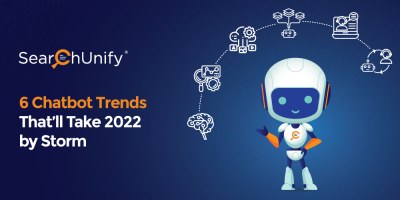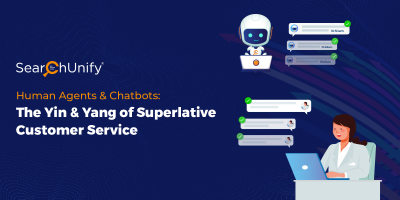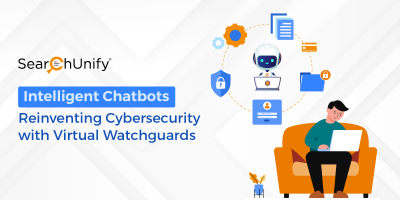
Artificial Intelligence is no longer an abstract concept. It’s a modern-day reality that is going to potentially impact our future, and hence, a force to be reckoned with. Over the years, AI has evolved to recognize speech, perform human-like tasks, and make tough decisions. Each time you think about a robot, the image that strikes your mind isn’t Vicki from Small Wonders (a famous American sitcom) anymore; instead, it’s virtual assistants like Alexa, Siri, and Google Home.
If you’ve ever wondered whether Alexa’s highly advanced human-like conversations were formed from a real person, then for the record, they’re not. So, how exactly do these virtual assistants work to communicate with us in human language? The answer lies in Natural Language Question-Answering (NLQA).
Intelligent chatbots or virtual assistants are built on the underlying technology of natural language processing and machine learning. AI-driven bots improve themselves by self-learning as and when more data is fed to them while elevating customer interactions. But, before we walk you through the key role NLQA plays in improving the effectiveness of chatbot answering systems, let’s take a look at what NLQA is.
What is a Natural Language Question-Answering (NLQA) System?
Simply put, NLQA is the discipline that provides relevant and short answers to customer queries rather than generating a never-ending list of possible answers. Interactive question-answering systems harness the power of NLP and NLU to translate sentences into binary codes for their own understanding. Thereafter, this converted machine data is clubbed with user intent to return relevant answers in a natural language for each query.

Role of NLQA in Improving Chatbot Effectiveness
The usage of AI to elevate customer interactions continues apace where more and more companies are relying on chatbots to expedite the support process. Statistics in a Gartner report predicted that 70% of white-collar workers will interact with conversational platforms on a daily basis by 2022. However, are all chatbots capable of having intelligent conversations? Well, not really! Let’s find out how NLP-powered bots fuel humanlike intelligence to interactions and deliver relevant information to users in a jiffy.
1. Question-Answering
Chatbots nowadays entail a technology that streamlines the retrieval process. The system must return with direct answers to direct queries as opposed to displaying a set of relevant documents. To optimize the process further, an interface that allows the configuration of human knowledge to train the system must be developed. Integrating NLP to your chatbots would train the system on various interactions and streamline the outputs to deliver superior answers consistently.
2. Answer Bank
Creating a knowledge base is referred to as an answer bank. User help systems have a predetermined set of frequently asked questions for which human agents are trained and help pages populated. Since different individuals can frame their questions heterogeneously, it falls upon NLP to ensure that variants of the same query must be redirected to a relevant answer.
A senior user experience researcher from Baymard Institute opines, “In the absence of good search results, the average user will simply think you don’t have what they’re looking for and will go somewhere else.”
3. Fact Bank
The database of information is often referred to as a fact bank. The system should have the ability to extract meaning and understand the search queries from structured and unstructured data. Additionally, it must map the query to appropriate structured data out of a myriad of unstructured documents and return relevant answers.
4. Passage Extraction
Often, the information requested by a user isn’t available within the structured database. This is where NLQA systems can be leveraged to enable the effective processing of human information. To start with, the intent of the query must be understood. Thereafter, it must be searched against the corpus to find the most fitting answer. Once the relevant document surfaces, only the selected parts that are best believed to answer the original question must be presented.

5. Dialogue Systems
More often than not, users are unable to provide adequate information or sufficiently describe their problem. In this scenario, a search bar doesn’t suffice. Enter a chatbot or an instant messaging interface where the users can directly ask questions. The chatbot either responds with a solution or poses follow-up questions until enough information has been gathered to address the initial customer query.

The Bottomline
Customer service is a hotbed for new technology. So, ensuring that your customer service solution is agile and self-serving becomes essential. NLP alone just doesn’t make the cut. This is where NLQA kicks in to take it a step further. NLQA gives relevant answers in natural language in contrast to NLP which surfaces multiple reference documents. So, by implementing a chatbot solution that leverages NLQA, you benefit by getting an advanced information retrieval value. Furthermore, it provides actionable insights to increase the business value by deriving inferences from human interactions. It also reduces the time to resolve by returning quick and relevant content.
If you’re still wondering why your chatbot needs to be built on self-learning algorithms, then see SearchUnify’s intelligent chatbot live in action and find out what sets us apart. As a testimony, we were adjudged as the ‘Best in Breed’ provider in a recent TSIA report on chatbots. So, without further ado, request a free demo now!

















